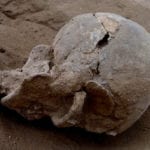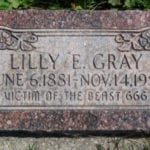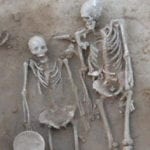 Technology
Technology  Technology
Technology  Humans
Humans 10 Everyday Human Behaviors That Are Actually Survival Instincts
 Animals
Animals 10 Animals That Humiliated and Harmed Historical Leaders
 History
History 10 Most Influential Protests in Modern History
 Creepy
Creepy 10 More Representations of Death from Myth, Legend, and Folktale
 Technology
Technology 10 Scientific Breakthroughs of 2025 That’ll Change Everything
 Our World
Our World 10 Ways Icelandic Culture Makes Other Countries Look Boring
 Misconceptions
Misconceptions 10 Common Misconceptions About the Victorian Era
 Mysteries
Mysteries 10 Strange Unexplained Mysteries of 2025
 Miscellaneous
Miscellaneous 10 of History’s Most Bell-Ringing Finishing Moves
 Technology
Technology Top 10 Everyday Tech Buzzwords That Hide a Darker Past
 Humans
Humans 10 Everyday Human Behaviors That Are Actually Survival Instincts
 Animals
Animals 10 Animals That Humiliated and Harmed Historical Leaders
Who's Behind Listverse?

Jamie Frater
Head Editor
Jamie founded Listverse due to an insatiable desire to share fascinating, obscure, and bizarre facts. He has been a guest speaker on numerous national radio and television stations and is a five time published author.
More About Us History
History 10 Most Influential Protests in Modern History
 Creepy
Creepy 10 More Representations of Death from Myth, Legend, and Folktale
 Technology
Technology 10 Scientific Breakthroughs of 2025 That’ll Change Everything
 Our World
Our World 10 Ways Icelandic Culture Makes Other Countries Look Boring
 Misconceptions
Misconceptions 10 Common Misconceptions About the Victorian Era
 Mysteries
Mysteries 10 Strange Unexplained Mysteries of 2025
 Miscellaneous
Miscellaneous 10 of History’s Most Bell-Ringing Finishing Moves
10 Weird Things That Prevented Body Snatchers From Ransacking Graves
In the early 1800s, Britain and America found themselves in a whirlwind of scientific and medical discovery. The study of anatomy and surgery was extremely popular. This led to a gruesome trade in bodies, a practice which was mirrored elsewhere around the world.
Grieving families could no longer bury their dead and expect them to remain that way. Resurrection men roamed churchyards late at night, looking for freshly dug graves. They would disinter the body, undress the corpse, and toss its clothes back into the grave before carrying it away into the night. After that, the body would be dissected, often in front of an audience, for the betterment of mankind.
Obviously, some relatives took exception to this, and they came up with a number of ingenious ways to foil the body snatchers.
10 Mort Safes
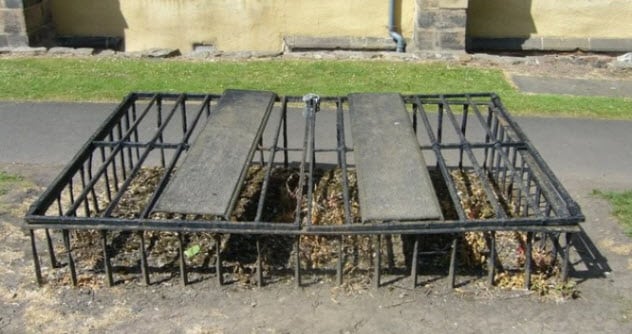
Mort safes were iron cages placed over and sometimes around the coffin to prevent it from being reached by the resurrection men. The cages were left over the graves for up to 10 weeks until the bodies were sufficiently putrefied that they were of no use for dissection. Sometimes, the cages were left in place permanently.[1]
At that time, Edinburgh had a noted surgical school and was a center of excellence for the study of anatomy and surgery. There was also a steady supply of cadavers due in no small part to two of its inhabitants—Mr. William Burke and Mr. William Hare. Surgeons’ Hall Museums in Edinburgh explore some of the less edifying history of surgery. Now they even boast an interactive dissecting table for visitors to have a go themselves—thankfully, not on a real body!
However, the inhabitants of Edinburgh at that time were not quite so happy. Evidence of mort safes can still be seen at a cemetery called Greyfriars Kirkyard, along with a number of other precautions taken by the residents to prevent the untimely resurrection of the dead.
9 Iron Coffins
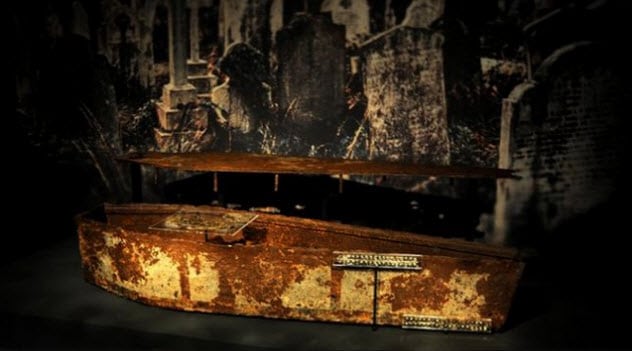
Wealthy families sometimes resorted to constructing the entire coffin from iron to prevent the body snatchers from reaching the remains inside. In St. Brides Church in Fleet Street, London, an iron coffin, riveted shut, was discovered bearing the date 1819. Meanwhile, the body of a boy found in an iron coffin near Washington is believed to date from the 1850s.[2]
A number of patented coffins were guaranteed to be tamperproof, with the iron coffin proving a particular favorite. Special lifting equipment was required to lower the coffins into the ground. This made things difficult for the cemetery keepers who were often reluctant to accept iron coffins.
In one case, the body of a woman lay unburied in her coffin for three months while the courts decided whether the cemetery keepers were entitled to refuse her entry. Which made the whole thing a little redundant.
8 Mort Houses
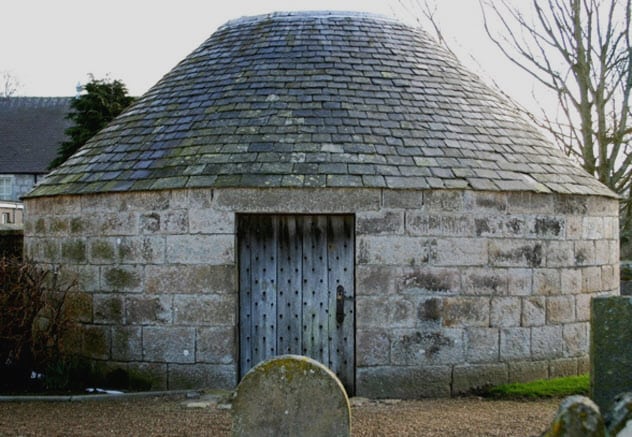
Mort houses were fortified and guarded buildings used for storing bodies prior to burial to render the corpses unfit for dissection. Each mort house would store a number of bodies for a fee, and they would stay there for several weeks until the decomposition was advanced.
The design of the mort houses was usually extremely secure. They were constructed along the lines of prisons and bank vaults. For example, the mort house at Belhelvie near Aberdeen is built of large granite blocks with a single doorway down three stone steps which is protected by a further set of double doors.
The inner door is covered with a sheet of iron and has a massive lock. The outer door is made of strong oak planks and is studded with iron bolts and two large mortise locks. The two keyholes are covered and protected by two iron bars, one hinged at the top of the door and the other at the bottom. Where the bars intersect, they are secured with a huge padlock.
It would take a committed body snatcher to get past that.
Scotland had a large number of mort houses, including one at Udny which boasted a revolving coffin platform for the easy addition and extraction of bodies.[3]
7 Delaying Burial

For those who couldn’t afford a place at a mort house, there remained the option of keeping the body at home until it had decomposed. It is unlikely that people found that to be a pleasant choice.
Mourners would also mix the earth in which the body was to be buried with an equal measure of straw to make it more difficult to dig through. But with the elaborate measures taken by the wealthy for their burials, the poor dead were especially vulnerable.
The penalties for body snatching were also relatively minor as long as the perpetrators did not carry away any of the deceased’s possessions. This accounted for the clothes being tossed back into the grave.
Those people who were unfortunate enough to die in the workhouse were especially vulnerable. “Charitable” hospitals would often sell the bodies of any inmates without kin directly to the dissecting hospitals, and resurrection men often arranged for someone to make a claim on the bodies by pretending to be a relative. It is a sad fact that they were valued more in death than they were in life.[4]
6 Mort Stones
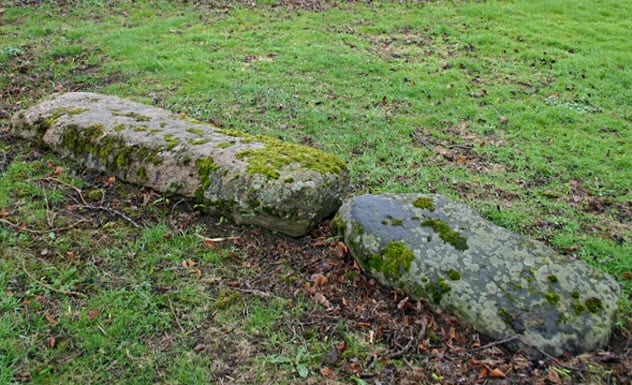
Graves were most likely to be robbed in the first week or two following the funeral when the corpse was freshest and the soil in the grave had not yet been firmed up. As a temporary measure, mort stones were sometimes used to cover the top of the grave site.
At Inverurie near Aberdeen, several mort stones can still be found in the graveyard. These large granite stones had the same dimensions as the plot and completely covered the coffin beneath. They required a special hoist to lift them into place and to remove them again after decomposition so that a headstone could be put in the same place.[5]
In 1816, Superintendent Gibb of Aberdeen Harbor Works gifted a mort stone, costing half a crown, to St. Fitticks churchyard. The lifting equipment cost considerably more and had to be kept securely under lock and key to prevent the sack-em-up men from getting to it.
5 Vigils
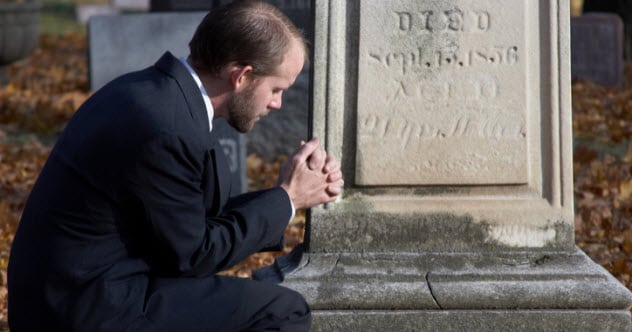
Relatives often took turns sitting at a graveside every night for the first week to deter the grave robbers. Sitting in the dark beside a grave waiting for robbers to show up could not have been an easy task. But people were so afraid of the body snatchers that they did it.
There was a popular view that a body had to be “whole” to enter Heaven. So the dissectors were therefore stealing not only the bodies of the dead but also their eternal rest.
A churchyard in Somerset, England, records the tragic tale of Miss Rogers who was engaged to a sailor. He was sailing home so that they could marry. But his ship wrecked, and he drowned.
As in all the best Gothic romances, his fiancee died soon after from a broken heart. She was buried in her wedding dress, wearing all her jewelry. About that time, there were rumors that resurrection men were searching for new corpses for surgical reasons. The family servants kept nightly vigil at the grave until such time as a mort stone could be laid over it.[6]
4 Watchmen
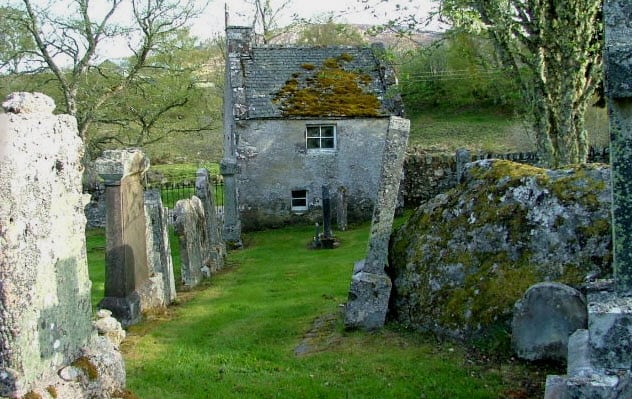
Those who did not fancy the task of sitting in the graveyard all night often procured the services of a watchman. The parish of Ely, for example, employed a watchman to be “constantly in the churchyards for the protection of the bodies buried.”
In some of the larger churchyards, watchhouses were built to lodge the watchmen between shifts. One near Aberdeen has a two-story tower with the upper floor used as a lookout. It even has a special hole through which the watchmen could shoot at intruders and a bell on the top of the tower which could be used to raise the alarm and to seek assistance.
Some body snatchers posed as watchmen themselves, which meant that they knew where all the traps were. Some were in league with the body snatchers and took a commission on the sale of the bodies.[7]
Being an honest watchman was a dangerous occupation. When bribery or intimidation couldn’t persuade the watchmen to look the other way, the sack-em-up men would take their chances anyway and turn to violence if they were caught. One poor guard was even attacked with a saber.
3 Coffin Torpedoes
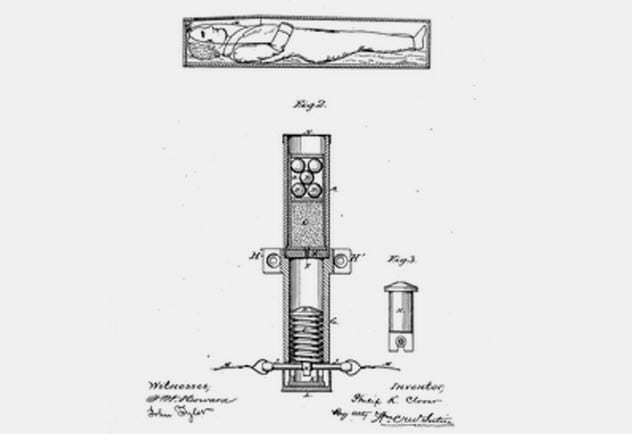
Among the more ingenious forms of burial security was the coffin torpedo.
Patented in 1878 in Columbus, Ohio, by Philip K. Clover, the coffin torpedo was designed to “successfully prevent the unauthorized resurrection of dead bodies; and . . . be readily secured to the coffin and the body of the contained corpse in such manner that any attempt to remove the body after burial will cause the discharge of the cartridge contained in the torpedo and injury or death of the desecrator of the grave.”[8]
The torpedo featured an intricate mechanism that exploded “with deadly force” if the coffin was disturbed. Little thought appears to have been given to the legality of such a weapon.
Luckily for Mr. Clover, there is little evidence that the coffin torpedo actually went into production. Churchyards were dangerous enough at that time with body snatchers creeping around with sabers in the middle of the night and armed watchmen shooting intruders through the walls without adding high explosives to the mix.
2 Coffin Collars
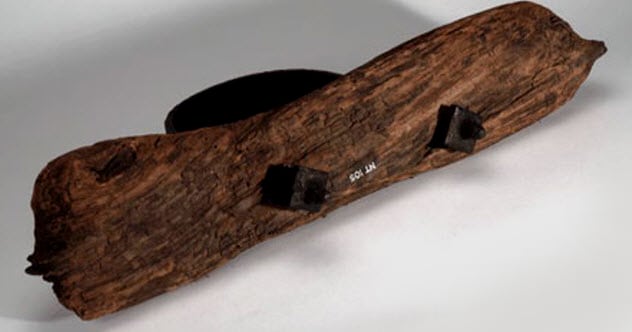
Rather more practical was the coffin collar. The collar was made up of a very heavy iron ring mounted on a board of thick oak. This was secured to the base of the coffin with heavy bolts, thus rendering it impossible to remove the corpse without decapitating it and seriously reducing its value.
This was a practical and comparatively cheap method of defeating the resurrectionists, and examples of their use have been found in churchyards in Scotland. The collars were not pretty and would have been very visible in an open casket. But they did give the deceased’s relatives some peace of mind.[9]
1 Booby Traps On Graves
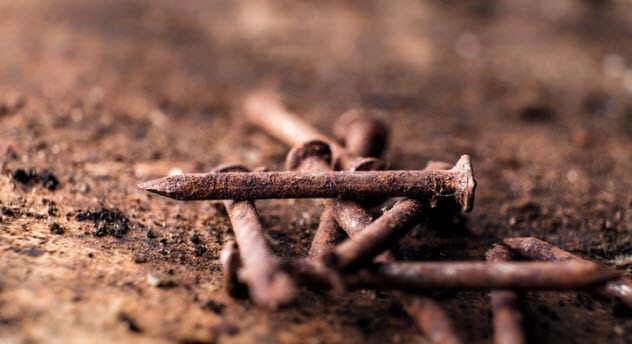
The feeling against the dissectors was so strong that some mourners even went so far as to booby trap the graves. They set spring-loaded guns into the ground and embedded sharp objects there, too. In Dublin, it was reported that a grieving father went so far as to plant a land mine in the coffin of his infant child.[10]
Whether the land mine was genuine is debatable. Certainly, no resurrection man took the trouble to find out.
The feelings against the resurrection men ran high, with citizens demanding that something be done to protect the dead. The passage of the 1832 Anatomy Act in England and similar bills in America and elsewhere ended the trade in bodies almost overnight.
It allowed for corpses to be obtained for medical research from a number of sources, particularly the poor and the unclaimed. Surgeons, medical students, and scientists could expand their knowledge of the human body while leaving the dead to their everlasting peace.
Ward Hazell is a writer who travels and is an occasional travel writer.
Read more creepy stories of body snatchers on 10 Disturbing Stories About History’s Body Snatchers and 10 Creepy Cases Of Body Snatching From Over 100 Years Ago.





